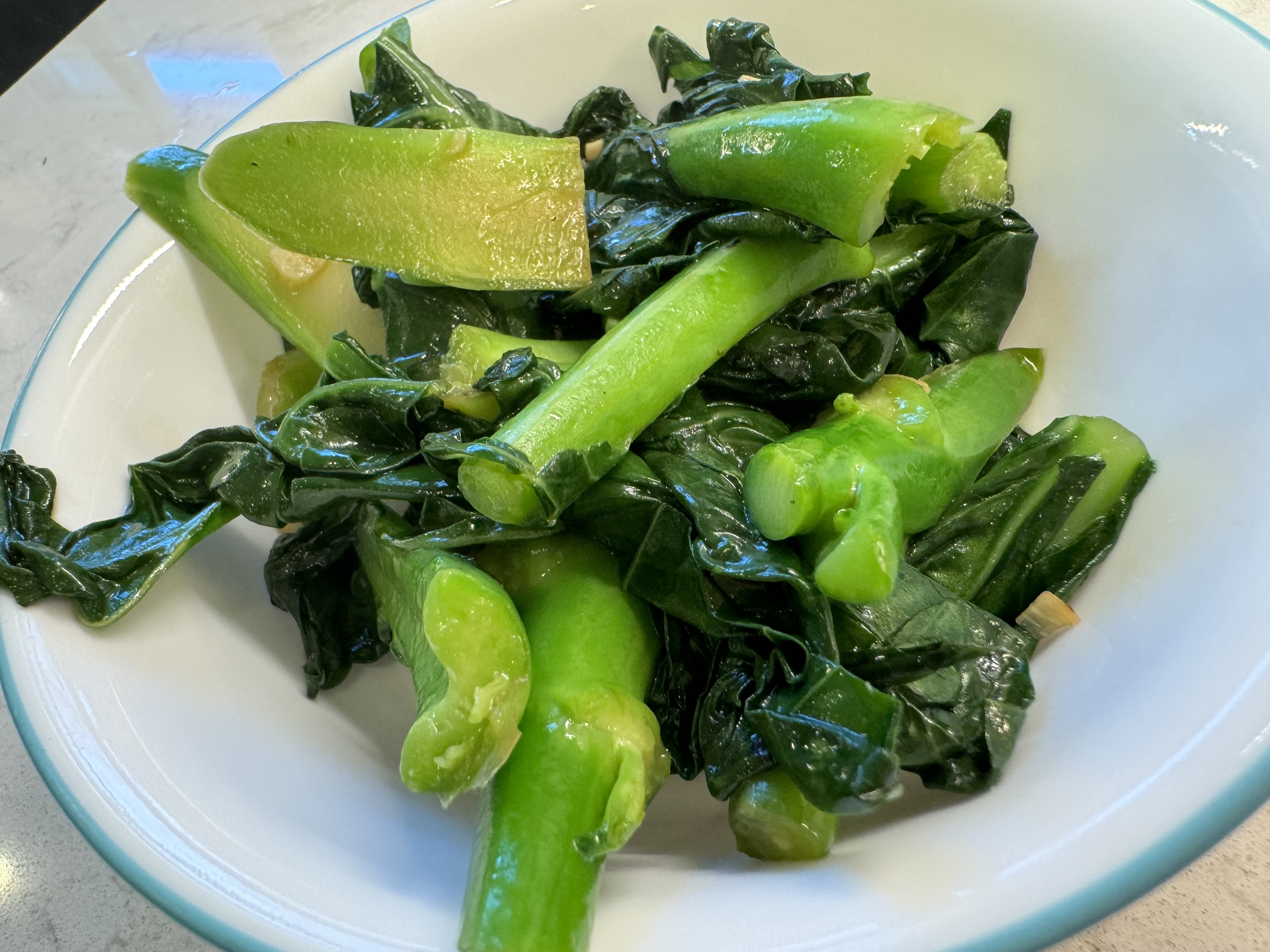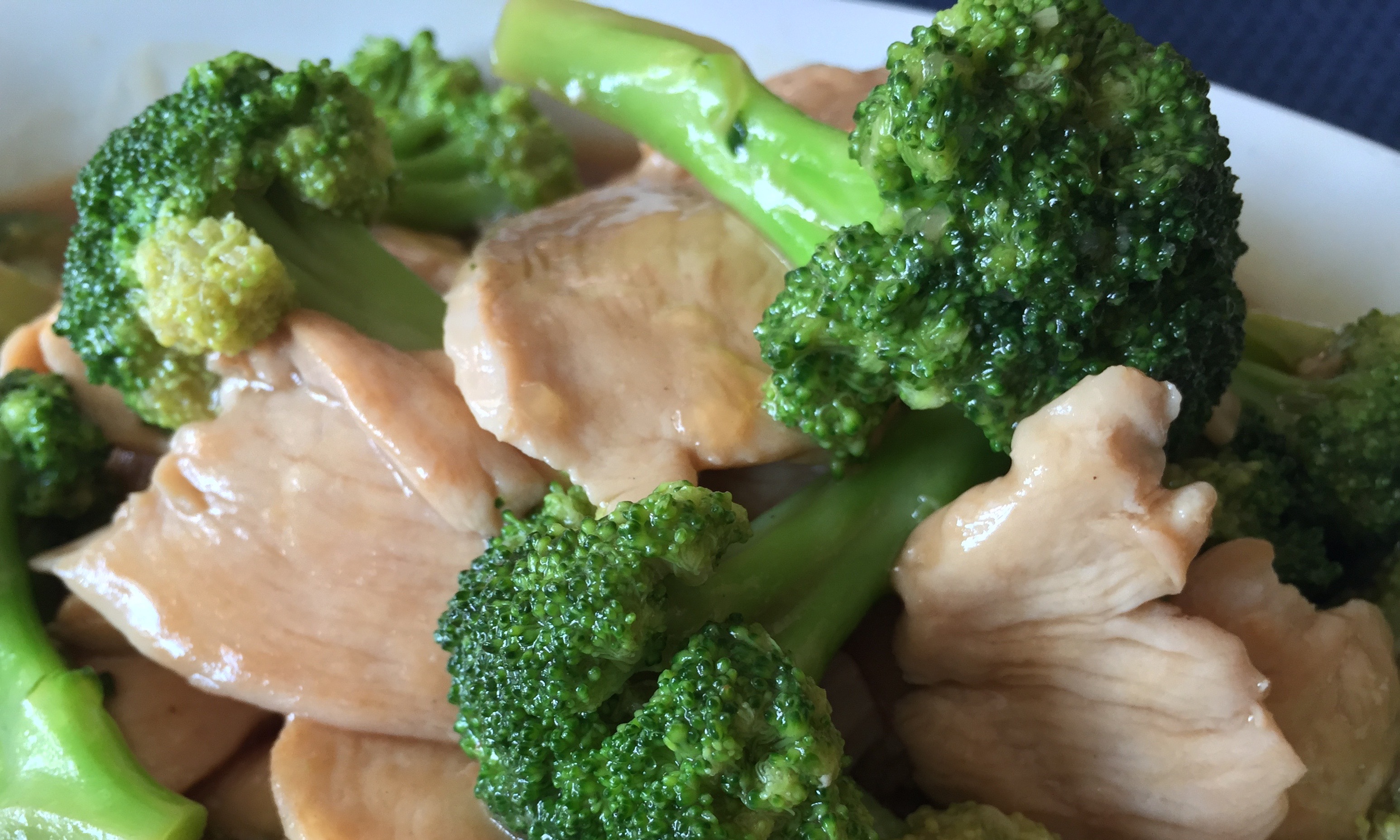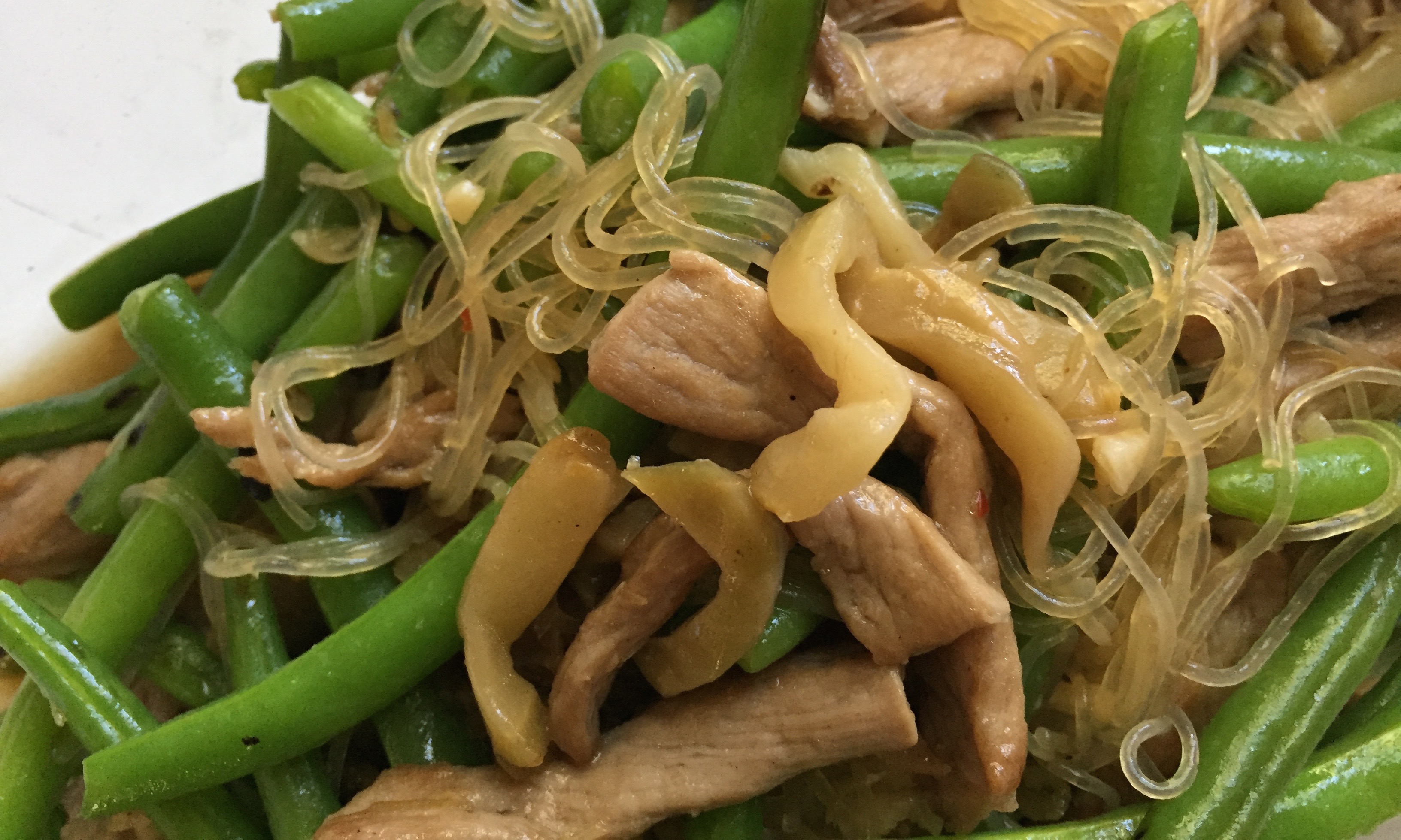Hey Dara, rather than send you an email, here are the instructions on how to fry Gailan. It’s easy.
Gailan is one the staples of a Cantonese home. It’s a must have in Hong Kong food establishments, whether it is a fancy Cantonese restaurant, or in some small shops serving noodles or congee.
Am using only two stalks–this is a small portion that is enough for you, I think. In a Cantonese home, we eat so much greens that washed and prepped vegetables would be piled full and high in a colander. We typically use three or four times more.
Since I think of myself as an economic and fast cook, I’ll show you the basics from start to finish–how to wash and place the veggies so that they are set up in the order you add to the pan.
I buy gailan at the Asian stores in Fairfax. Look for dark green and fresh leaves and firm stems. This one is the variety that has thick stems, size of the thickness of a thumb. But they also have a variety that has the stem about the size of a mid-size asparagus. They might call it baby gailan. Both are yummy.
First remove the largest leaves and pile theme together and slice into three or four sections. Rinse the leafy tops first and set in colander to drain, then the stems and place at the side of colander.
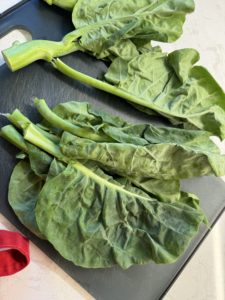
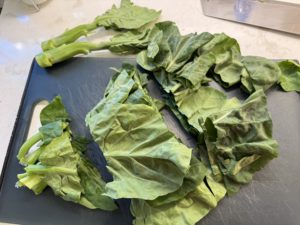
![]()
![]()
Then cut the stems diagonally. Have everything ready as you will have to work quickly.
![]()
![]()
Quick Fry Gailan
1 serving
2-3 bunches gailan
1 clove garlic, minced
1 tablespoon peanut or vegetable oil.
To clean the gailan, first separate the largest leaves and stack them on top of each other. Slice crosswise into three or four sections, keeping the woody, stem parts separate. Rinse the leafy parts first and drain the leaves in a colander. Then rinse the stalks and stack on top of leaves. (There is a system to this. When you fry the vegetable, you can retrieve the different parts more efficiently.)
With the remaining stalks, trim the mid-sized leaves and tips. Rinse and place on to the side, on top of the first group of leaves.
Wash the thick stems and then slice diagonally. Rinse and place on to one side. You’ll be frying these first.
In wok, heat the oil. Add garlic and as soon as it starts to soften and turn slightly golden, add the sliced, thick stems. Stir for a few seconds. Then add the tips and other stems and woody parts. Fry and mix well. Let the stems fry for about 15 seconds.
Then add the leaves and continue to toss the leaves around in the wok with your spatula.
(Give it a good fry, scooping the veggies from the bottom and letting the fresh leaves at the top get to be seared against the hot pan as well. I know, I know… tossing the veggies and shaking the pan looks very professional but I don’t do it on my induction stove top. Not going to break or scratch the glass. You do it if you use gas or have a strong wrist.)
Add salt to taste, maybe a pinch. You can also add a dollop–one teaspoon–of oyster sauce but that’s optional.
When leaves are softened and have lost their springiness and stems are tender, you’re done. Transfer to serving dish.
